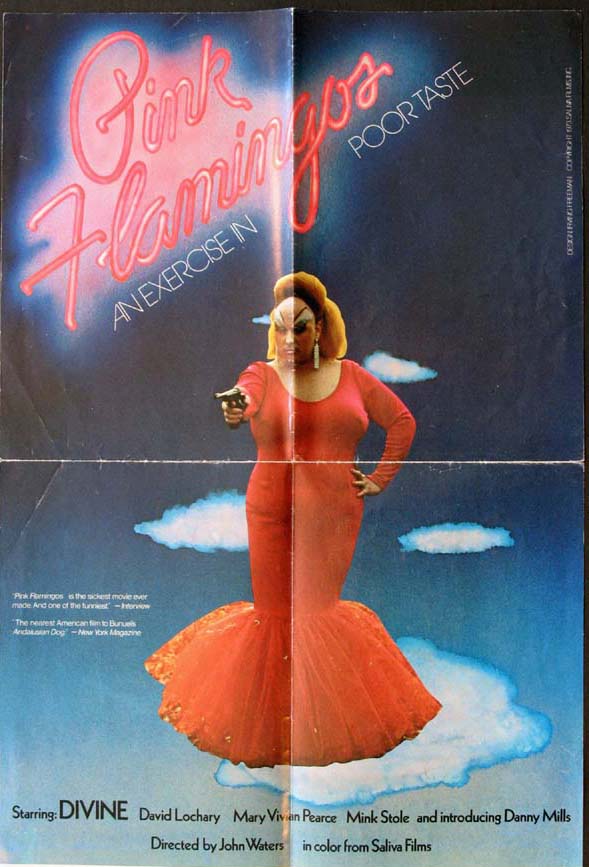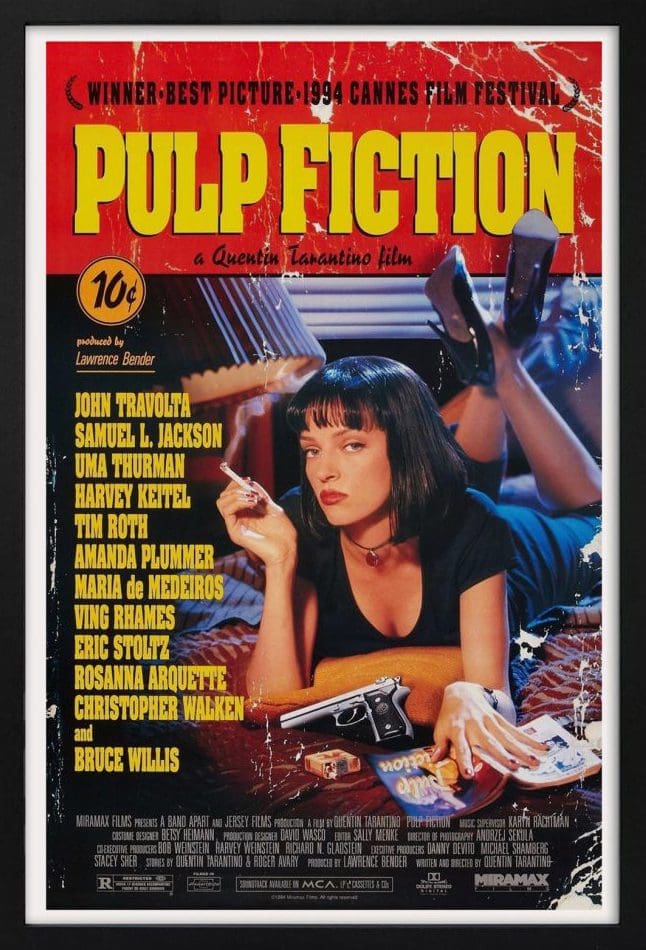Search Posts
Recent Posts
- Senior Agenda Coalition of RI pushes wealth tax to fund programs for older residents – Herb Weiss June 2, 2025
- How will Artificial Intelligence (AI) impact the future of work – Mary T. O’Sullivan June 2, 2025
- Real Estate in RI: Tiverton contemporary for $1.27M June 2, 2025
- Our Networking Pick of the Week: Coffee Hour at Provence Sur Mer, Newport June 2, 2025
- Rhode Island Weather for June 2, 2025 – Jack Donnelly June 2, 2025
Categories
Subscribe!
Thanks for subscribing! Please check your email for further instructions.

5 must-see American Indie films – picked by URI film professor and author
Justin Wyatt’s forthcoming book surveys the full history of American independent film. We asked him to pick five must-see films
For many, the term “independent film” conjures images of cerebral, low-budget movies screened in small art house theaters or elite film festivals. But to Justin Wyatt, an associate professor of communication studies, journalism, and film media at the University of Rhode Island, it’s far more than that.

“American independent cinema exists outside the mainstream,” Wyatt said. “That could be anything from micro-budget movies to highly marketable ‘Indiewood’ films. It could be a film that’s simply outside of the mainstream in terms of an ideological message. It might depict people who are marginalized or forgotten by mainstream society or entertainment. Or it could be something that’s just aesthetically different from what we’re used to seeing.”
Most importantly, Wyatt says, indie film serves as a kind of laboratory, where boundaries are pushed—or even obliterated—and the future direction of film is charted out one groundbreaking scene at a time.
“Indie film is really about expanding our horizons in terms of what film can be, and what film can become,” Wyatt said. “It’s the lifeblood of artistry in moviemaking and the vehicle for moving American film forward.”
In a new book from Routledge Books called “Screening American Independent Film,” Wyatt and co-editor W.D. Phillips from Texas Tech University present 50 new essays from leading scholars, each exploring a single film chosen from across the full history of American independent cinema. Each chapter is anchored by the key historical, political, stylistic, or industrial contexts that are necessary to fully understanding the film, while contributing new research, insights, and arguments to prevailing analyses.
“There aren’t a lot of books that do a sweep of American independent film across decades, looking at how American independent film has changed and is also driving and responding to changes in American society,” Wyatt said. “That’s what I feel the book does.”
In anticipation of the book’s release on May 31, we asked Wyatt to discuss five films that he considers essential viewing for fans of independent cinema.
1. “Detour” (1945) – Classic film noir

Wyatt: “Detour” was a classic, no-budget film noir directed by Edward G. Ulmer. It’s about a man who gets involved with a femme fatale who has him wrapped around her finger 8 million times. The film chronicles how his worldview is shifted as the relationship becomes corrosive, destructive and ultimately fatalistic. I see “Detour” as a great example of a simple story infused with the aesthetics and worldview of film noir, giving it a distinct mood and visual sense. It’s beautifully designed, has great acting and is wonderfully fast paced. You can tell that it was made for a nickel, but it’s a prime example of how an indie director can make clever and ingenious decisions when faced with a low budget. It’s a gem of independent filmmaking from the ’40s.
_
2. “Pink Flamingos” (1972) – John Waters popularizes the “midnight movie”

Wyatt: This was the breakthrough film by the great John Waters. The marketing tagline for it was “An exercise in poor taste,” and Waters did not disappoint—and I mean that in the best way possible. It’s basically about a director (played by the legendary drag performer, Divine) on a quest to be known as the filthiest person alive. The film revels in bad taste. In the process, Waters taking down middle class and bourgeois expectations—even those of the art cinema and independent film crowd. This was a time when there were a lot of foreign films coming into the U.S. and small theaters were showing a lot of art house films. But it was clear that “Pink Flamingos” didn’t exactly fit with the Ingmar Bergmans, Federico Fellinis, and the Bernardo Bertoluccis of the world, which is part of why it was so refreshing.
Waters is a great independent filmmaker, but also someone with an incredible marketing imagination. He helped to show that independent films can make an impact commercially as well as artistically. With “Pink Flamingos,” Waters helps create the midnight movie. I love the idea that you have these movies that are so offbeat and unique that they need to be shown at a different time of day—at midnight. You have the mainstream films during the day, but late at night, when most people are sleeping, there’s now this space for those who are a little bit more adventurous to see something different. That’s a cultural shift.
3. “One from the Heart” (1982) – A celebrated director goes ‘indie’ in a big way

Wyatt: When people think about independent film, they often think of little-known directors trying to scrape enough money together to start shooting. But with “One from the Heart,” we have Francis ??Ford?? Coppola, one of the most celebrated directors of the 1970s who was fresh off huge hits like “The Godfather,” “The Godfather, Part II” and “Apocalypse Now.” After those films, he wanted to do something different, which ended up being this romance that he made for his independent Zoetrope Studios.
It’s a very simple story about two people who have been together for several years, but argue and break up over a weekend. They each have a little fling with someone else and then they get back together. The narrative is hardly novel, but the way Coppola shot it was remarkable. It’s set in Las Vegas, and Coppola essentially built the city completely inside a studio. To me, this a great example of an independent film that’s incredibly creative aesthetically and artistically. I saw it when I was a young college student, and I didn’t really remember the story or the acting. It was the imagery that stayed with me—these amazing sets and the most beautiful neon-soaked images you can imagine.
It was incredibly expensive ($26 million) to make, and the kind of film that no mainstream studio would ever approve. It was also a commercial flop that wiped out Zoetrope Studios. Coppola spent years recovering from it by making big mainstream films like “Bram Stoker’s Dracula.”
4. “She’s Gotta Have It” (1986) – Spike Lee launches a legendary career

Wyatt: This was Spike Lee’s feature debut and a groundbreaking independent film. It centers on Nola Darling (Tracy Camilla Johns), a black graphic artist, juggling three boyfriends. Rather than resort to stereotypes or patriarchal judgment, Lee presents this tale of sexual freedom and transgression as a bold comedy-drama. Despite the fact that it’s a male director’s point of view, the frank discussion of female sexuality was still pretty groundbreaking at the time.
It was a big success as well. On a meager budget of $175,000, the film garnered more than $7 million at the box office. It really showed what a Black filmmaker working outside the studio system could do. And it set the stage for Lee’s film “Do the Right Thing” three years later, which was a masterpiece and a studio picture that’s one of the most important films of that decade, and maybe the second half of the 20th century.
___
5. “Pulp Fiction” (1994) – Tarantino takes indie filmmaking to the stratosphere

Wyatt: Quentin Tarantino is a fascinating figure to me because he’s both a film historian and someone who has his finger on the pulse of pop culture. He can tap into the zeitgeist in a way that not a lot of filmmakers can, and that’s what “Pulp Fiction” did. The term “pulp fiction” refers to a genre of dime-store novels about all sorts of sordid things—crime, violence, drugs, “forbidden” sexuality. “Pulp Fiction” takes those stories and puts them into this collage of pop culture from the recent past—along with witty dialogue and kitschy catch phrases. Meanwhile, he’s experimenting with structure, editing and, cinematography marking a turning point in American film.
And it was a huge hit—an indie film that made $230 million. That’s astonishing. It’s an example of an indie film that rewrote the potential for indie filmmaking, and changed American culture as well.
___

Good selections Justin. I hope Blood Simple and Raising Arizona are in there somewhere.